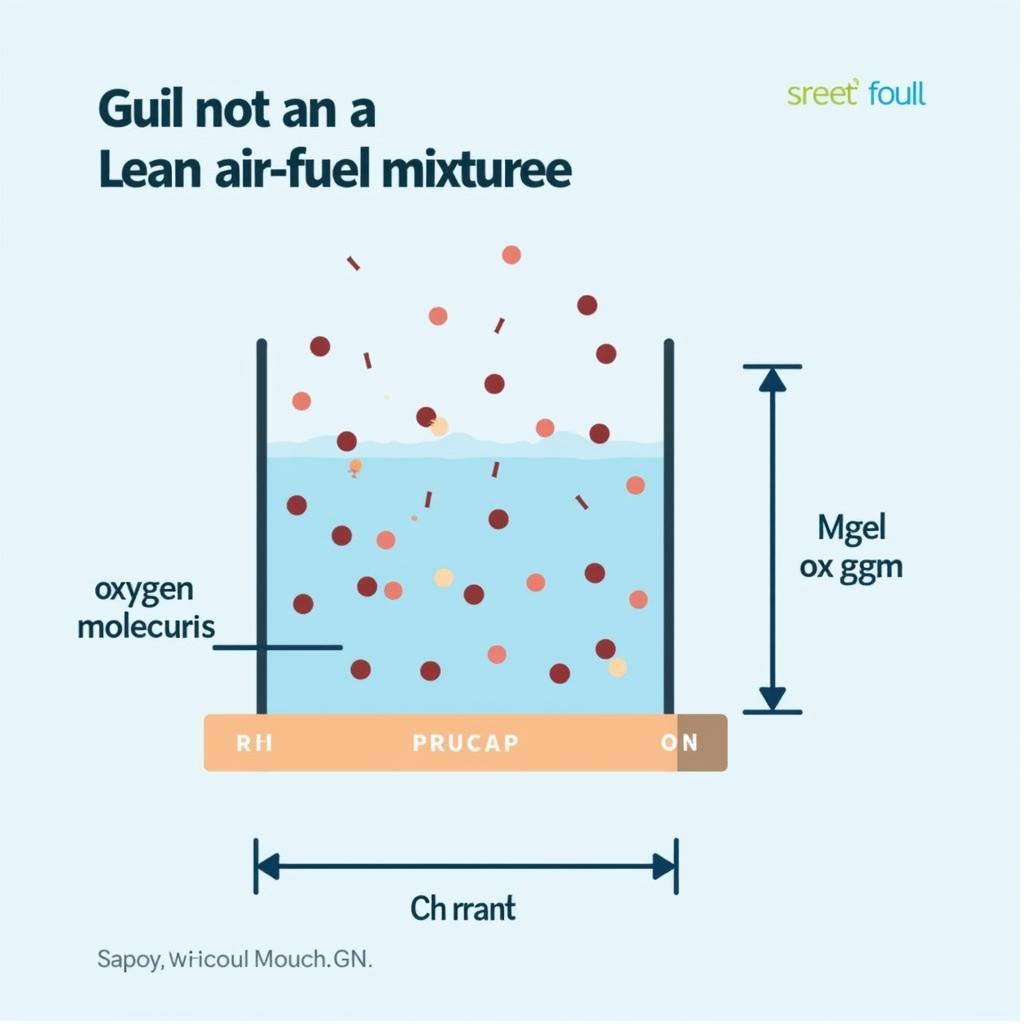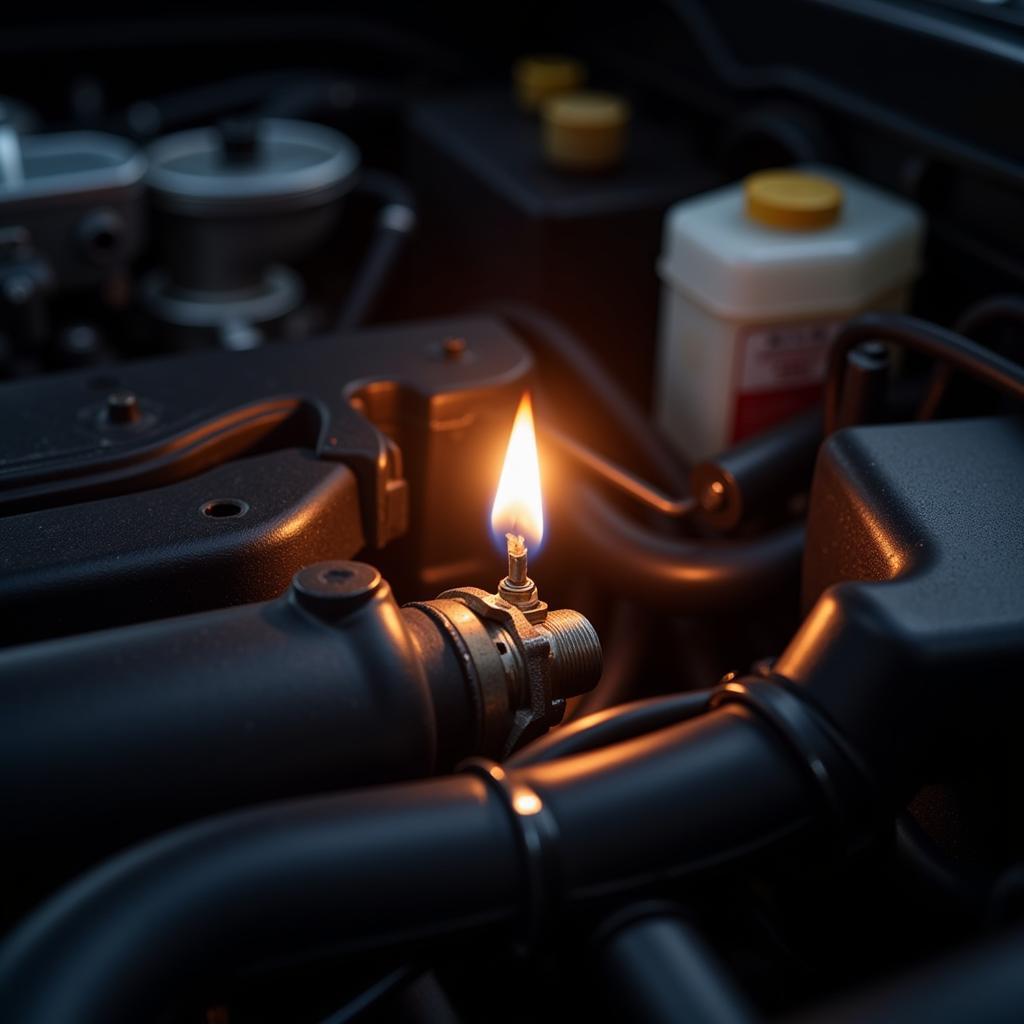The ASE (Automotive Service Excellence) certification for Automobile technicians includes a section on GAS analysis. This section evaluates your understanding of how to analyze the composition of exhaust gases to diagnose engine performance. Whether you’re preparing for your ASE exam or just brushing up on your knowledge, understanding the basics of 5 GAS analysis is crucial. This article covers five common questions you might encounter on the ASE test, helping you confidently tackle this important topic.
What Does 5 GAS Analysis Tell Us?
5 GAS analysis provides a snapshot of your engine’s combustion efficiency and emissions performance by measuring the concentrations of five key gases in the exhaust:
- Oxygen (O2): Indicates the amount of unused oxygen in the exhaust, reflecting the air-fuel mixture ratio.
- Carbon Monoxide (CO): A byproduct of incomplete combustion, high levels may indicate a rich fuel mixture or problems with the catalytic converter.
- Carbon Dioxide (CO2): A normal byproduct of complete combustion, its levels offer insights into combustion efficiency.
- Hydrocarbons (HC): Unburned fuel escaping the combustion process, high levels suggest ignition problems or a rich fuel mixture.
- Oxides of Nitrogen (NOx): Forms at high temperatures, elevated levels can point to inefficient combustion or faulty EGR systems.
By analyzing these gas concentrations, technicians can identify potential issues such as:
- Rich or lean air-fuel mixtures
- Ignition problems
- Faulty catalytic converters
- EGR system malfunctions
Understanding the significance of each gas and its implications on engine performance is key to interpreting 5 GAS analysis results accurately.
How Do I Interpret High O2 Readings?
High O2 readings in the exhaust gas typically indicate a lean air-fuel mixture. This means there’s more air than fuel present during combustion. Several factors can contribute to a lean mixture:
- Vacuum leaks: Leaks in the intake manifold or vacuum hoses can introduce excess air into the system.
- Faulty oxygen sensor: An inaccurate oxygen sensor reading can mislead the engine control unit (ECU) into delivering a lean mixture.
- Fuel delivery issues: Problems with the fuel pump, fuel filter, or fuel injectors can restrict fuel flow, leading to a lean condition.
 Lean Air-Fuel Mixture Diagram
Lean Air-Fuel Mixture Diagram
Ignoring high O2 readings can lead to reduced engine performance, poor fuel economy, and potential engine damage over time.
What Can Cause Elevated CO Levels?
Elevated CO levels in the exhaust are a red flag for incomplete combustion, a process where fuel isn’t burning completely. This can stem from several issues:
- Rich air-fuel mixture: Too much fuel in the combustion chamber doesn’t allow for complete combustion, resulting in higher CO emissions.
- Restricted airflow: Insufficient airflow, possibly due to a clogged air filter or restricted intake, can limit the oxygen available for combustion.
- Faulty catalytic converter: A malfunctioning catalytic converter can’t effectively convert CO into CO2, leading to increased CO emissions.
High CO levels not only indicate engine inefficiency but also pose serious health risks, as CO is a poisonous gas. Addressing the root cause of elevated CO is crucial for both engine performance and safety.
What’s the Significance of the HC Reading?
High HC readings signal unburned fuel escaping the combustion chamber, pointing to potential issues with the engine’s combustion process. Common culprits include:
- Ignition system problems: Weak sparks, faulty spark plugs, or incorrect ignition timing can prevent the complete combustion of fuel.
- Rich air-fuel mixture: Similar to CO, an overly rich mixture can lead to unburned fuel in the exhaust.
- Worn piston rings or cylinder walls: Damaged components can allow fuel to leak past the combustion chamber and into the exhaust.
 Spark Plug Ignition
Spark Plug Ignition
Excessive HC emissions decrease fuel efficiency and contribute to air pollution, highlighting the need to identify and resolve the underlying problem promptly.
How Do I Analyze NOx Emissions?
NOx emissions, primarily consisting of nitric oxide (NO) and nitrogen dioxide (NO2), form at high combustion temperatures. Elevated NOx readings can indicate:
- High combustion temperatures: Overly advanced ignition timing or lean air-fuel mixtures can lead to excessively high combustion temperatures.
- Faulty EGR system: A malfunctioning Exhaust Gas Recirculation (EGR) system disrupts the recirculation of exhaust gases, which helps control combustion temperatures and NOx formation.
Excessive NOx emissions contribute significantly to smog and acid rain, impacting air quality and the environment.
Conclusion
Mastering 5 GAS analysis is essential for anyone working on modern vehicles. By understanding what each gas represents and the potential causes of abnormal readings, technicians can effectively diagnose and resolve engine performance issues, ensuring optimal vehicle operation and reduced environmental impact. Remember to consult your vehicle’s specific repair manual and utilize professional-grade equipment for accurate diagnosis and repair.
FAQs
1. What is the ideal range for each gas in a 5 GAS analysis?
Ideal ranges vary depending on the vehicle and engine type. Consult the vehicle manufacturer’s specifications for precise values.
2. Can I perform a 5 GAS analysis myself?
While DIY kits exist, accurate 5 GAS analysis requires specialized equipment and expertise. It’s recommended to have it performed by a qualified technician.
3. How often should I get a 5 GAS analysis done?
A 5 GAS analysis is often part of a comprehensive engine diagnostic procedure. It’s recommended to have it done if you experience performance issues or as part of regular maintenance.
Need Further Assistance with ASE Test Preparation?
Explore our resources on ASE diesel practice questions and ASE deisel test preap to enhance your understanding. You can also find valuable information about analytical chemistry contract labs with dionex ase for specialized testing needs.
Contact Us:
For any inquiries or assistance, feel free to reach out to our dedicated support team.
Phone: 0369020373
Email: [email protected]
Address: Thon Ngoc Lien, Hiep Hoa, Bac Giang, Vietnam
We offer 24/7 customer service to address all your needs.

